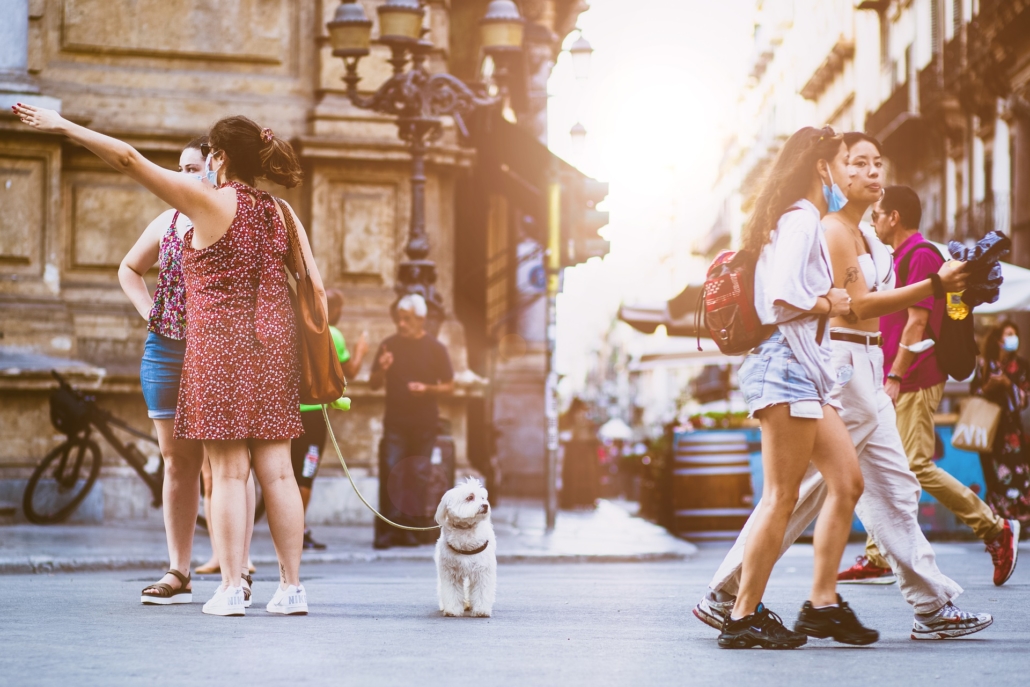Teaching Your Pup to Walk on A Leash Without Pulling
Bringing a new dog into your home is one of the most exciting, rewarding things you can do. If they’re a rescue, they’ll surely reward your kindness with love, affection, and years of zany antics. If you’ve gotten a puppy or young adult dog (or an adult/senior that was untrained), then getting them to walk on a leash can be challenging.
There is a small school of thought that preaches the belief that dogs walking on a leash should be allowed to roam freely, smelling and barking and playing how they like. There are other who believe that off-leash walking is possible, even in the city.
Don’t buy into it.
The reality is that we need our dogs well behaved on the leash, not to satisfy our egos of being a good dog trainer, but instead to:
But, how do you get an energetic, monkey-minded dog, especially a puppy, to behave while walking on leash?
Don’t Let Their Energy Dictate the Pace
The biggest mistake dog owners make on the walk starts before the leash is even attached to the collar or harness.
Dogs, especially puppies, become very excited at the sight of their leash. It means walks! Freedom! Friends and cars and people and all the cool smells the wind brings!
They’ll jump. They spin in circles. They’ll run around.
And, what do most of us do? We think it’s cute, leash them up, then start the walk. Before we even get out of the door they’re pulling us like a Clydesdale.
First, don’t start the walk until they’re calm. This will take patience on your part and theirs. You have to be willing to wait them out. Teach them to sit and wait calmly (it’s an excited calm, but it’s not jumping and running and spinning).
Once they’re calm, attach their leash/harness/collar. Now, this will not happen on the first attempt. They’ll feign being relaxed, then get wild as you begin the leashing process. Back off, re-start. Keep going until they’re calm.
This one challenge will remove many of the behavior problems that occur on the walks. By putting your dog in a calm mental state, you teach them that – yeah, walks are cool, but they’re more fun when we do them as a team.
Choose the Right Equipment
This is a highly individual choice. Harness vs collar. Rope leash vs nylon vs multiple-handle vs slip.
You’ll have to experiment.
However, a good rule is: if you have a large, powerful, or forceful dog, retractable leashes are not your friend.
They allow a dog to run at full speed before being stopped with a violent pull of their neck or chests. They allow for very little gripping power. They break easily.
Leave retractable leashes to the Toy group.
Off-Leash Training
If you have a yard, you can use the space to teach your dog that walking next to you is awesome. If you live in an apartment, you can try it indoors, too.
Put their leash on (when they’re calm). Walk away. When you’re about 10-feet away, call them with a quick command like “come on,” or “let’s go.”
Be cheerful. Let them know it’ll be fun.
When they reach your side, reward them with treats or affection.
Take hold of the leash and start walking. If she strays, use a gentle pull on the leash to put her back on track. Do not yank. These create negative associations.
Continue this exercise until you can make a lap or two around the yard (or apartment), then take the show on the road.
Expose Them to All the Sights and Sounds
Once on the street, you and your puppy will be faced with many distractions. Exposure to cars, people, other dogs, cats, squirrels, etc. help your dog become desensitized to the stimulus. They’ll acknowledge the car or the other dog, but it won’t cause a negative behavior.
If she’s pulling or getting wild, simply repeat your command (Let’s go, come on, etc.) and walk in the opposite direction. Gentle pulls to get her attention focused on walking.
This, again, will take a lot of practice. If you have friends with dogs, have them walk with you. Have them meet you in the street. Have your friends walk by you and your dog. All of these controlled exposures help your dog.
Looking for weekly insights and tips to keep your best friend happy & healthy?
Look no further and sign up for our newsletter right away:


